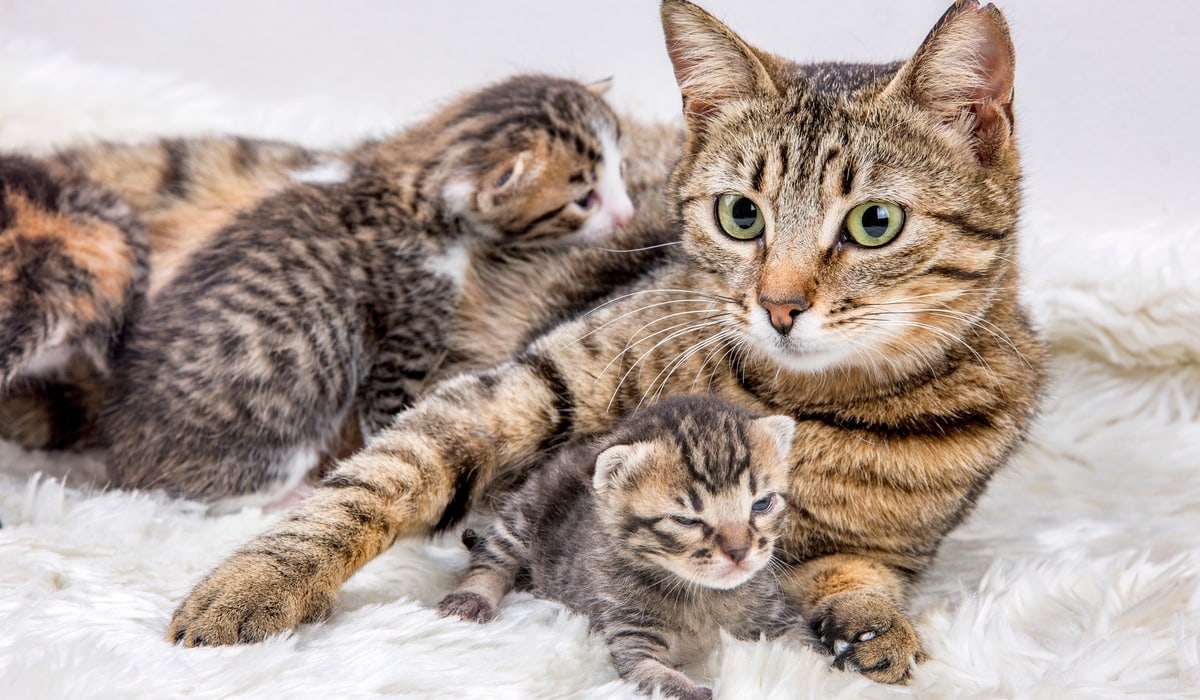Cat pregnancies are an exciting time for all the household, but just how do you know if your feline is expecting?
While arriving home to be surprised by an adorable litter of kittens certainly isn’t the worst thing in the world, knowing your cat is pregnant means you can care for them accordingly during that period. It also gives you ample time to prepare for your new arrivals.
There are a few signs to keep an eye out for, the first and most obvious being a change in shape.
Your cat’s stomach will start to grow noticeably bigger around the 30-day mark. Pregnant cats can gain around 1 to 2kg, depending on how many kittens they are carrying, so the weight gain can be very noticeable.
Similarly to us humans, some pregnant cats can experience morning sickness, tiredness and a loss of appetite. This is quite rare though, and could be linked to other health issues. If these symptoms persist, be sure to contact your vet.
Another sign your cat could be pregnant is the enlargement and reddening of their nipples – referred to as ‘pinking up’ – which may be seen a month into the pregnancy.
Behavioural changes may also be seen in the last week of pregnancy, with your cats potentially becoming more vocal or searching for a suitable location to give birth.
The best way to find out if your cat is pregnant is to make an appointment with the vet.
An ultrasound can confirm a pregnancy after two to three weeks, but will not show the number of kittens they are carrying. X-rays can determine the number of kittens to expect, but should not be carried out until later in the pregnancy.




